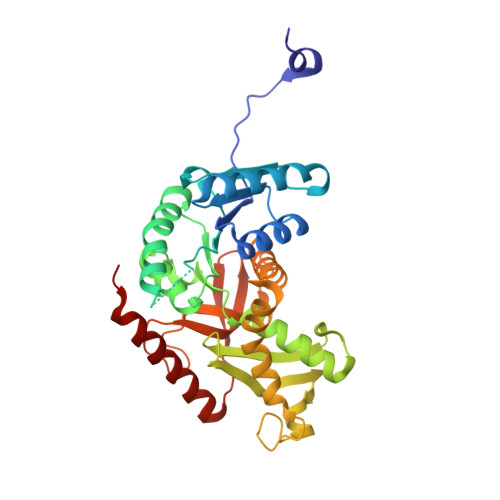Fragment growing and linking lead to novel nanomolar lactate dehydrogenase inhibitors.
Kohlmann, A., Zech, S.G., Li, F., Zhou, T., Squillace, R.M., Commodore, L., Greenfield, M.T., Lu, X., Miller, D.P., Huang, W.S., Qi, J., Thomas, R.M., Wang, Y., Zhang, S., Dodd, R., Liu, S., Xu, R., Xu, Y., Miret, J.J., Rivera, V., Clackson, T., Shakespeare, W.C., Zhu, X., Dalgarno, D.C.(2013) J Med Chem 56: 1023-1040
- PubMed: 23302067
- DOI: https://doi.org/10.1021/jm3014844
- Primary Citation of Related Structures:
4I8X, 4I9H, 4I9N, 4I9U - PubMed Abstract:
Lactate dehydrogenase A (LDH-A) catalyzes the interconversion of lactate and pyruvate in the glycolysis pathway. Cancer cells rely heavily on glycolysis instead of oxidative phosphorylation to generate ATP, a phenomenon known as the Warburg effect. The inhibition of LDH-A by small molecules is therefore of interest for potential cancer treatments. We describe the identification and optimization of LDH-A inhibitors by fragment-based drug discovery. We applied ligand based NMR screening to identify low affinity fragments binding to LDH-A. The dissociation constants (K(d)) and enzyme inhibition (IC(50)) of fragment hits were measured by surface plasmon resonance (SPR) and enzyme assays, respectively. The binding modes of selected fragments were investigated by X-ray crystallography. Fragment growing and linking, followed by chemical optimization, resulted in nanomolar LDH-A inhibitors that demonstrated stoichiometric binding to LDH-A. Selected molecules inhibited lactate production in cells, suggesting target-specific inhibition in cancer cell lines.
Organizational Affiliation:
ARIAD Pharmaceuticals, Inc., 26 Landsdowne Street, Cambridge, Massachusetts 02139, USA. anna.kohlmann@ariad.com















